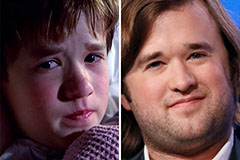The Evolution of Classic Fairy Tales
Fairy tales stem from ancient customs, with many tales being verbally shared long before they were written.
Fairy tales have emerged from an array of cultural traditions, including European, Middle Eastern, and Asian roots.
At first, fairy tales were narrated among grown-ups, typically embedding themes and messages relevant to the societal values and standards of their era.
Jacob and Wilhelm Grimm, known as the Brothers Grimm, were some of the first to gather and publish these beloved tales in the early 1800s.
The Brothers Grimm's anthology, "Grimm's Fairy Tales," included well-known tales like "Cinderella," "Hansel and Gretel," and "Snow White," which have since become iconic in classic fairy tales.
Similarly, Hans Christian Andersen's delightful tales, including "The Little Mermaid" and "The Ugly Duckling," have touched hearts across the world, securing their place in classic fairy tales.
Fairy Tales in the Modern World
Though rooted in ancient times, fairy tales continue to hold significance, especially as bedtime stories for kids.
These enchanting stories are available in various forms today, such as beautifully illustrated books, captivating animations, and free fairy tales online.
Their enduring popularity can be attributed to several enchanting factors:
Moral Lessons: These timeless tales often impart essential moral lessons.
Stories like "The Boy Who Cried Wolf" teach the significance of honesty, while "The Tortoise and the Hare" highlight the virtues of perseverance and humility.
These tales present children with clear moral lessons, assisting in the development of their moral compass in a subtle but profound manner.
Empathy and Understanding: These narratives often involve characters enduring adversities, prompting readers to empathize with their challenges and rejoice in their successes.
As an illustration, "Beauty and the Beast" highlights the importance of looking beyond physical appearances to grasp a person's true qualities, fostering empathy and compassion.
Cultural Insights: Many of these tales are rich in the cultural contexts from which they emerged.
Exploring these stories can provide enchanting insights into various traditions, beliefs, and societal systems, promoting a sense of global awareness and appreciation.
Imagination and Creativity: The fantastical aspects of fairy tales—talking animals, magical incantations, and enchanted forests—spark children’s imaginations.
These narratives whisk readers away to fantastical lands, encouraging creative thinking and a lifelong sense of wonder.
The Learning Benefits of Fairy Tales
Timeless fairy tales captivate and educate in equal measure.
These tales function as magical aids in nurturing various cognitive and emotional skills in kids.
When these stories are read aloud, they boost language skills by offering new words and complex sentence patterns.
This practice also improves listening skills and concentration, as children hang on every word, eager to see what happens next.
Moreover, talking about fairy tale themes and characters can sharpen critical thinking and analytical skills.
Children acquire the skills to spot patterns, anticipate events, and understand cause and effect.
Discussing these stories also aids kids in expressing their thoughts and emotions, contributing to their emotional development.
The Future of Fairy Tales in the Digital World
In the modern tech era, the widespread availability of free fairy tales online has boosted their accessibility.
Online sites and apps present vast collections of classic fairy tales that can be enjoyed at any time, from any place.
Reading fairy tales aloud is highly favored, providing an engaging means for kids to enjoy these enchanting tales.
Audiobooks and narrated videos bring characters and settings to life, typically accompanied by magical sound effects and music that enhance the storytelling.
Why website Fairy Tales Will Never Go Out of Style
The lasting charm of classic fairy tales is due to their adaptability to changing eras while maintaining their essential messages.
Modern adaptations of these tales frequently feature a more diverse cast of characters and contemporary settings, increasing their appeal to today’s audience.
Still, the essential themes of bravery, kindness, and fairness remain constant, continuing to resonate with readers of all ages.
These stories also provide a feeling of comfort and familiarity.
They provide a structured narrative with a clear beginning, middle, and end, often concluding with the resolution of conflicts and the triumph of good over evil.
This predictability can reassure children, giving a sense of stability in an ever-changing environment.
Summary
Timeless tales captivate and educate, keeping their enchantment and importance in the contemporary world.
As bedtime stories for kids, they provide a perfect blend of enchantment and wisdom, nurturing moral values, empathy, and creativity.
The widespread accessibility of free fairy tales online and the popularity of read-aloud fairy tales keep these timeless stories within reach for new generations.
By maintaining and sharing these narratives, we keep celebrating the vibrant fabric of human creativity and cultural traditions.
Whether you are reading an exquisitely illustrated book, browsing a digital library, or listening to an audiobook, the magic of classic fairy tales remains accessible.
These stories remind us of the timeless power of storytelling and its capacity to connect us across eras and places, casting a spell that educates and delights.
 Haley Joel Osment Then & Now!
Haley Joel Osment Then & Now! Jake Lloyd Then & Now!
Jake Lloyd Then & Now! Sydney Simpson Then & Now!
Sydney Simpson Then & Now! Kelly Le Brock Then & Now!
Kelly Le Brock Then & Now! Samantha Fox Then & Now!
Samantha Fox Then & Now!